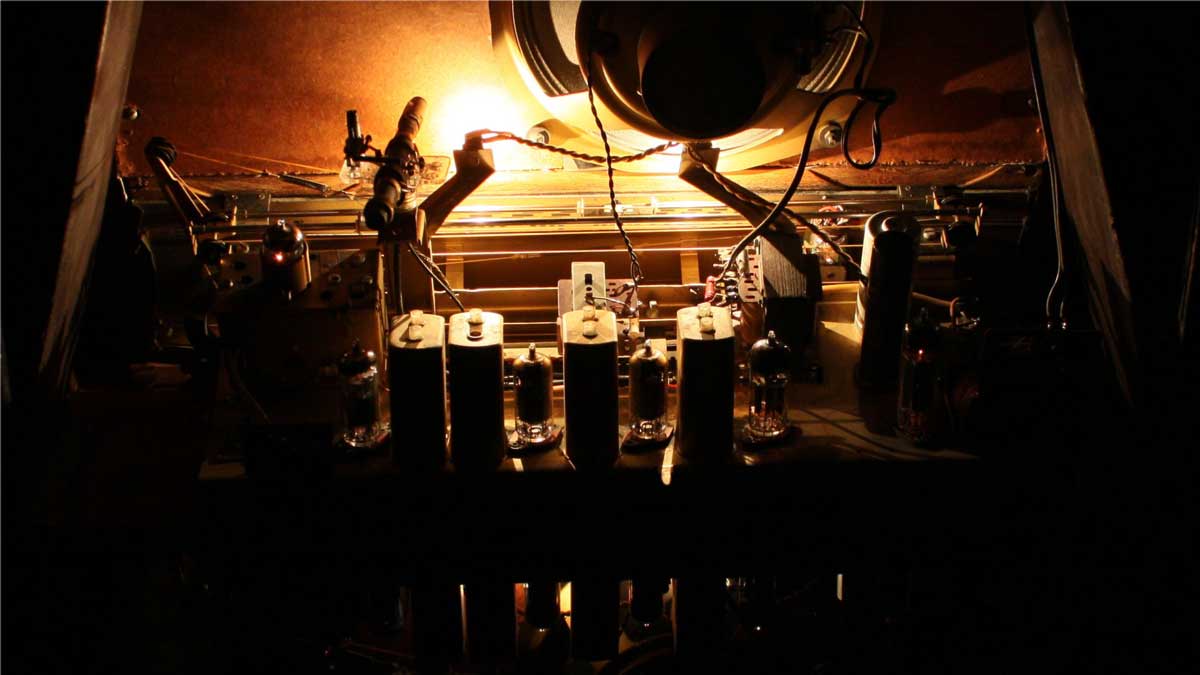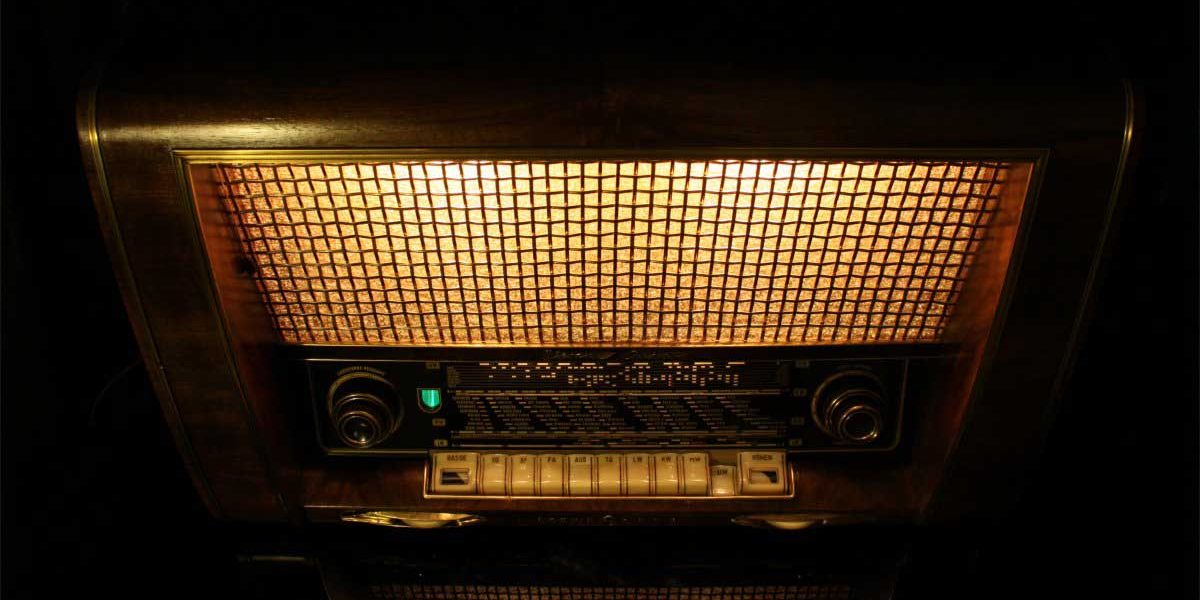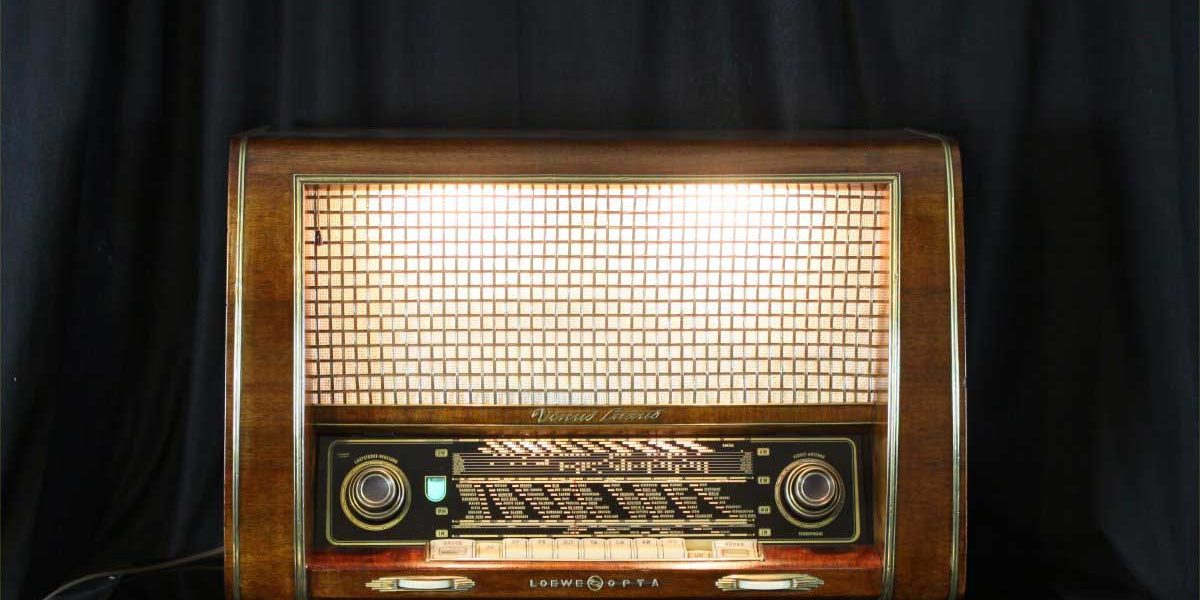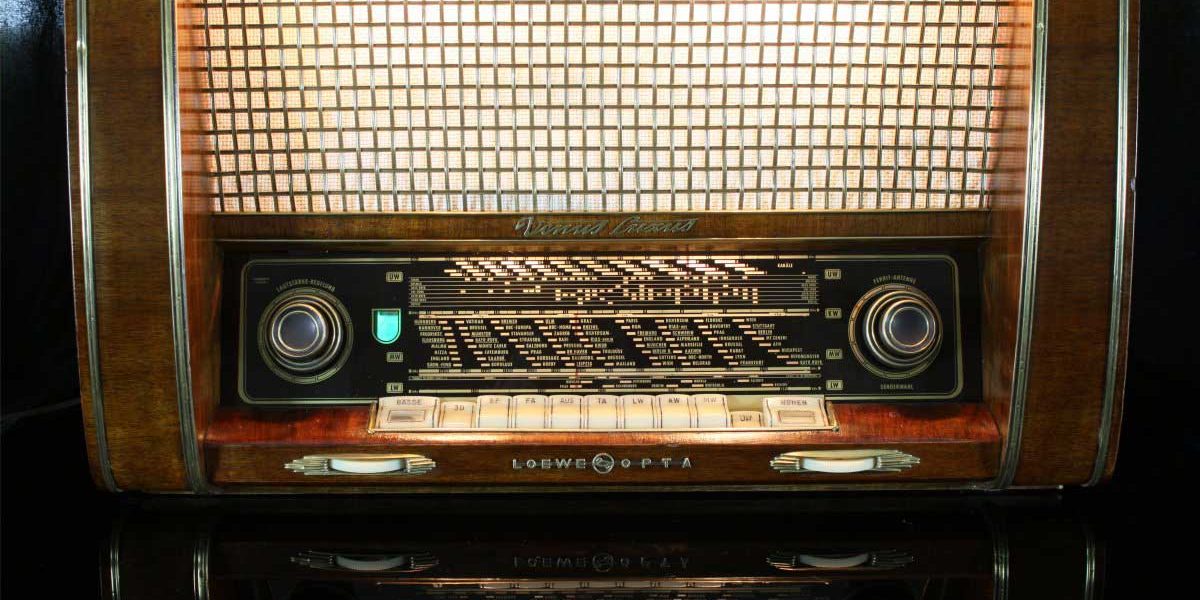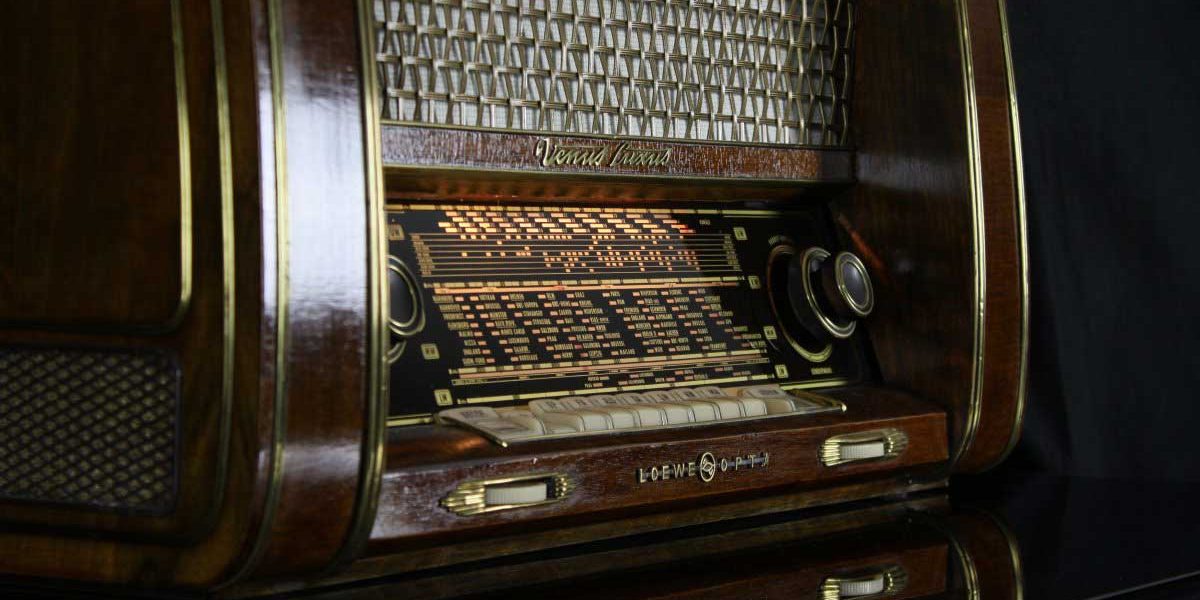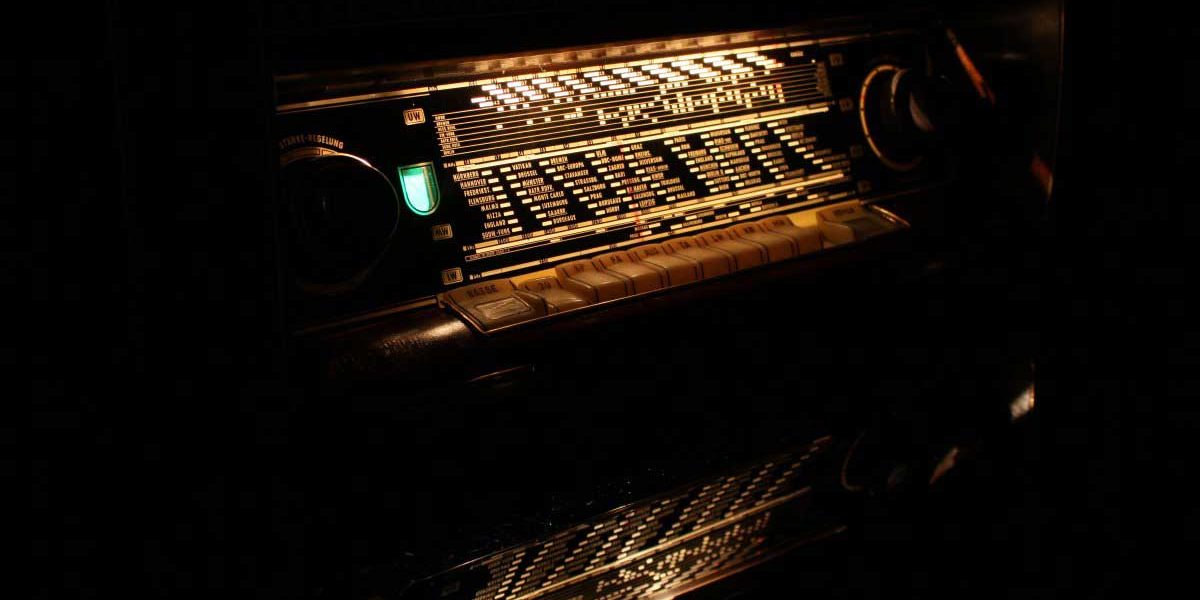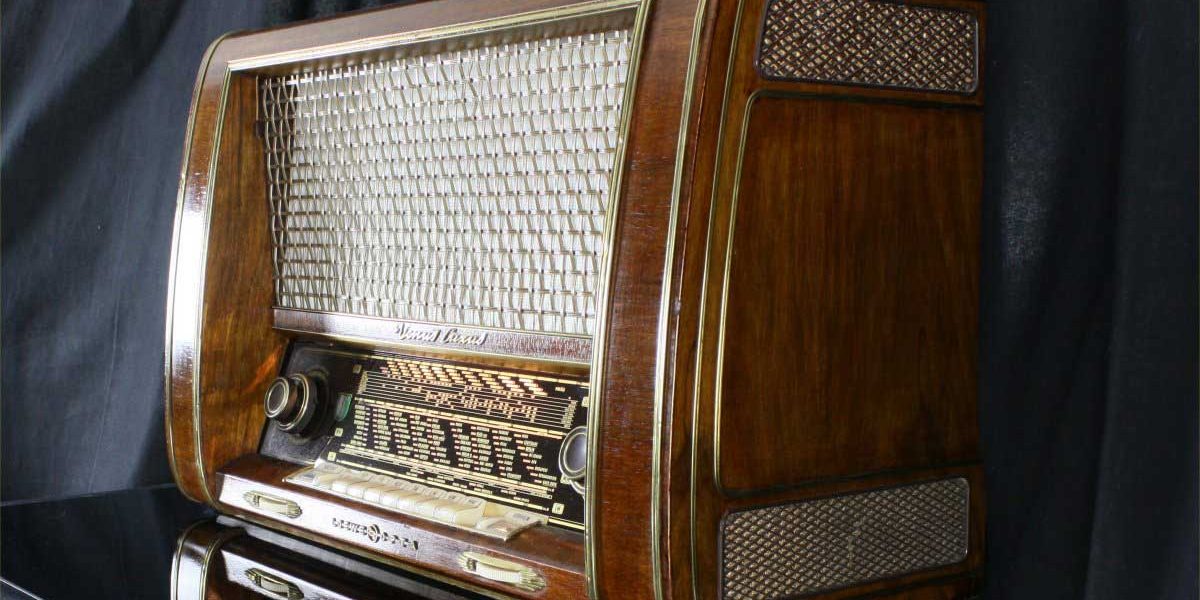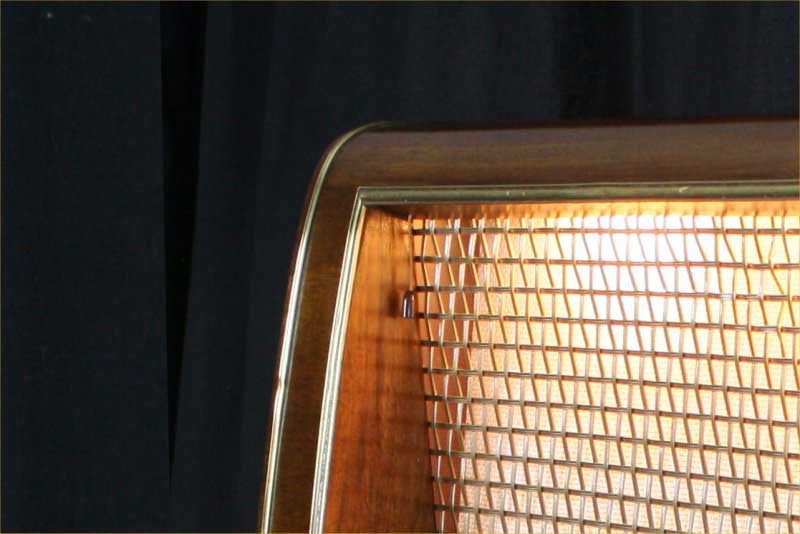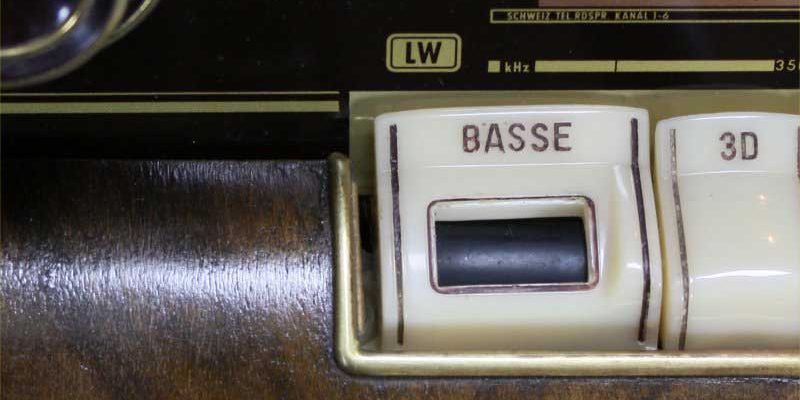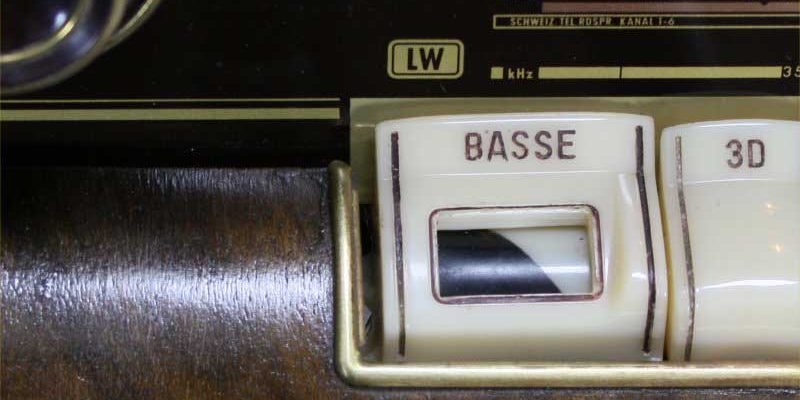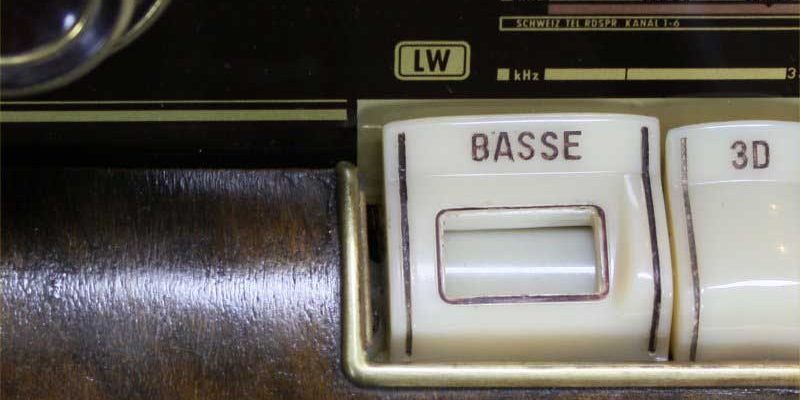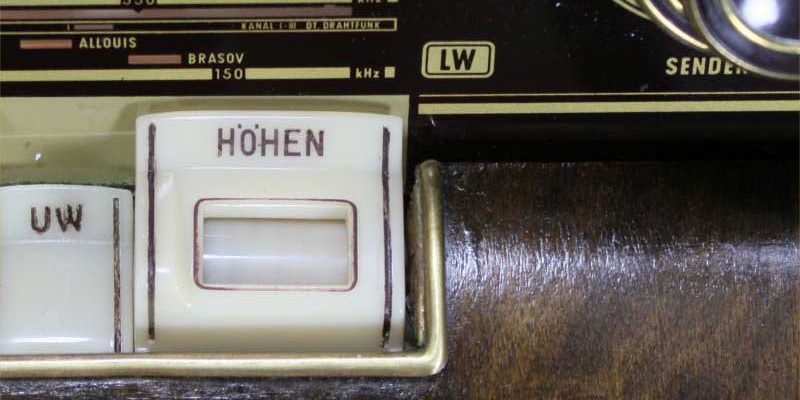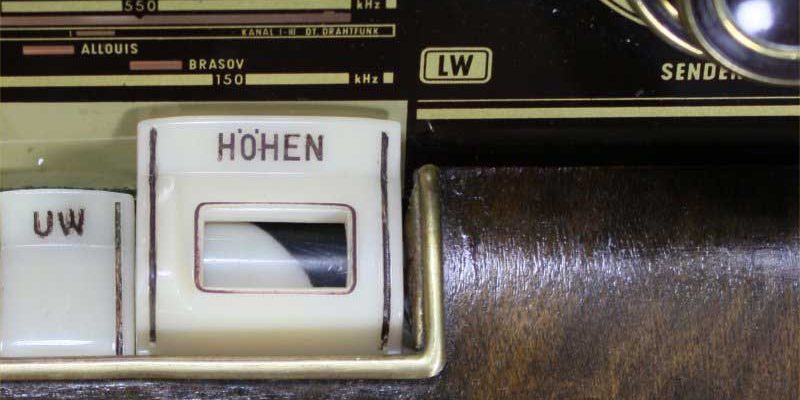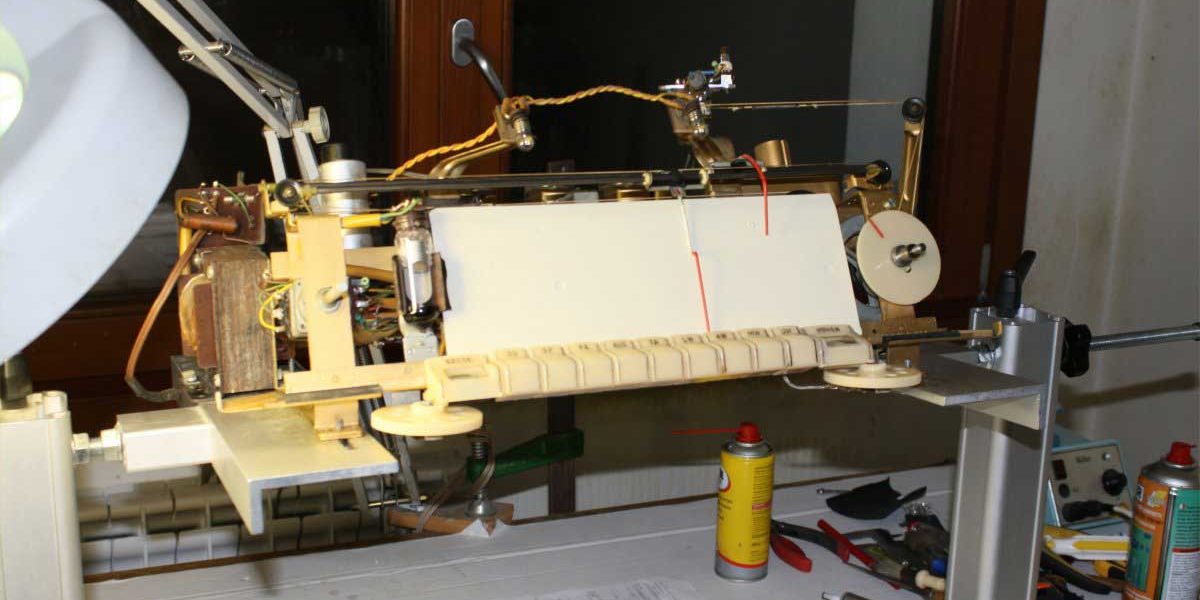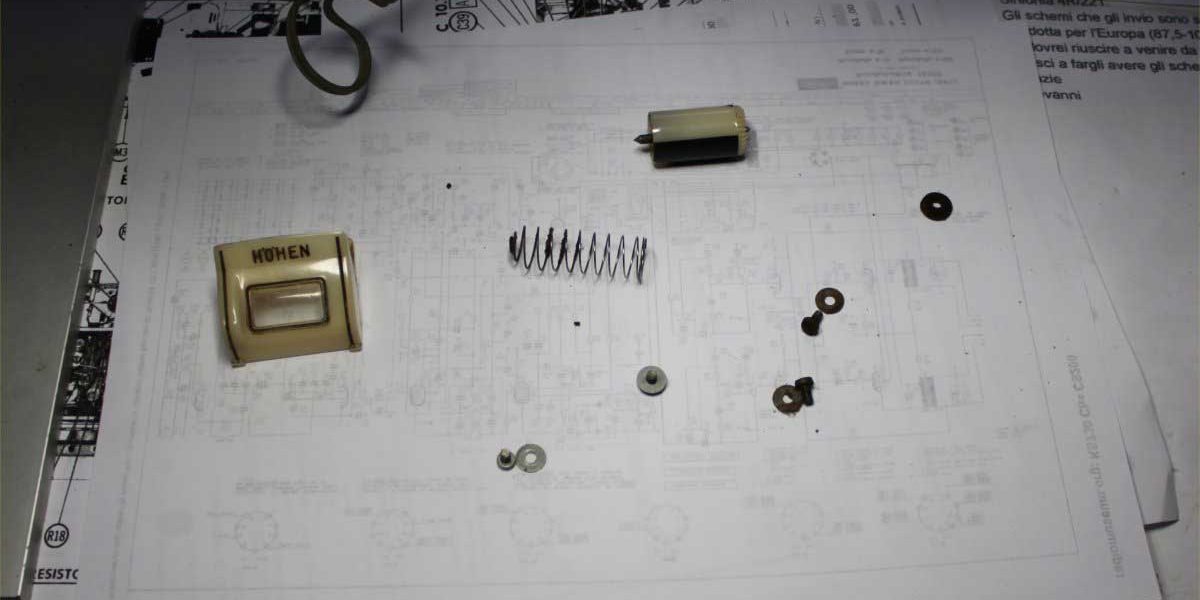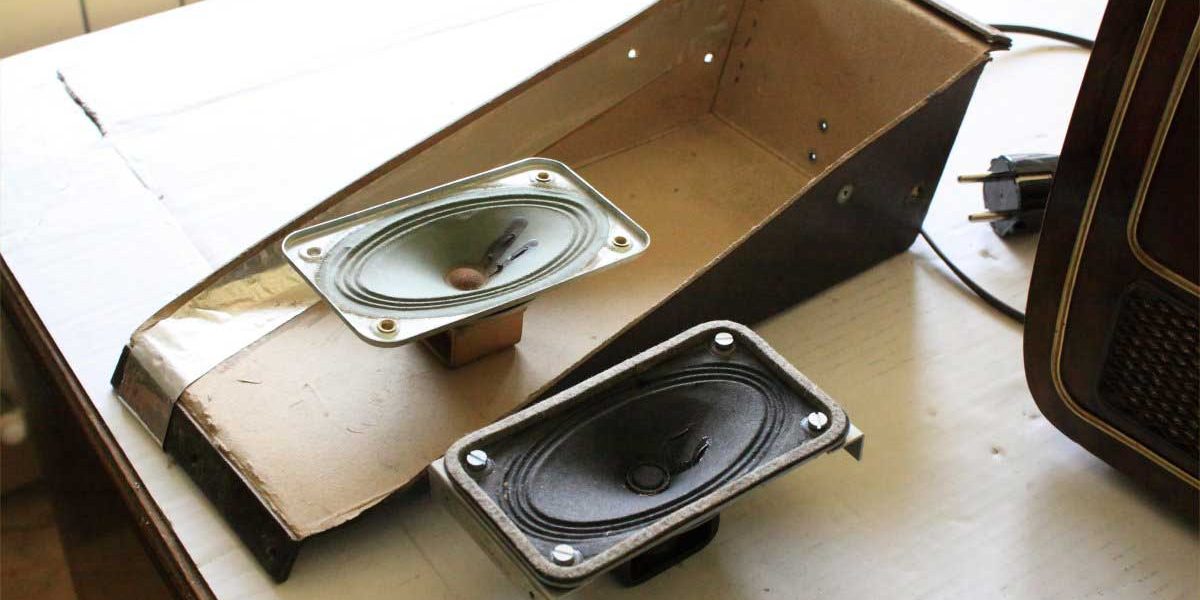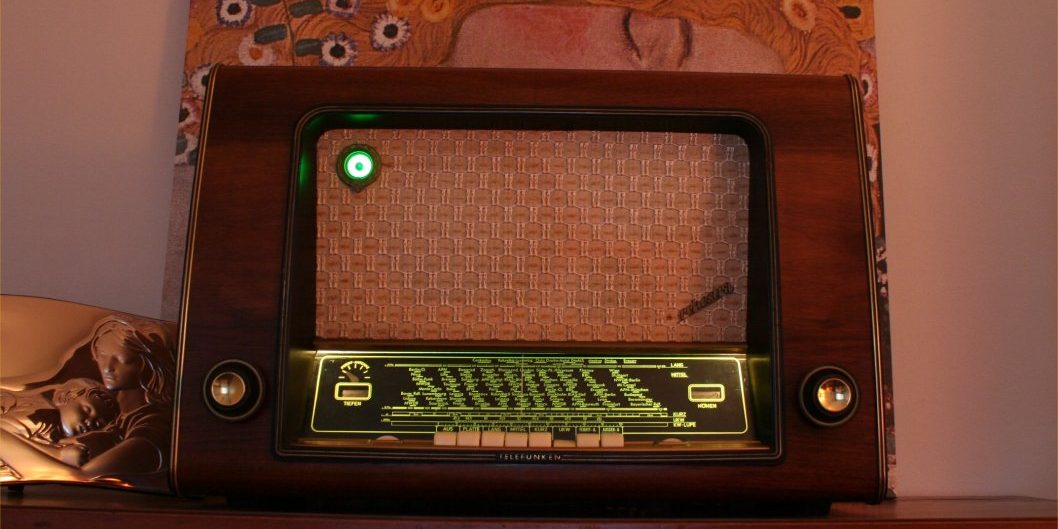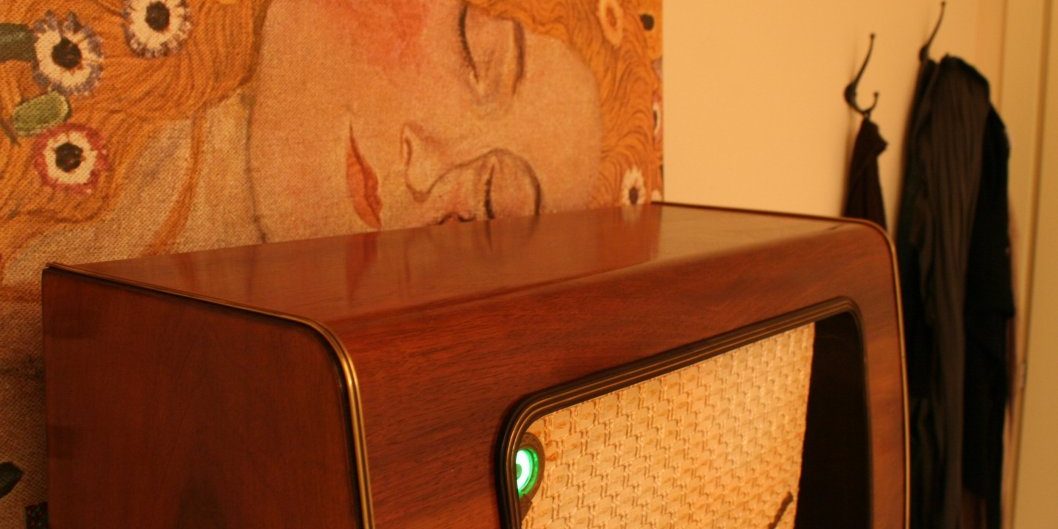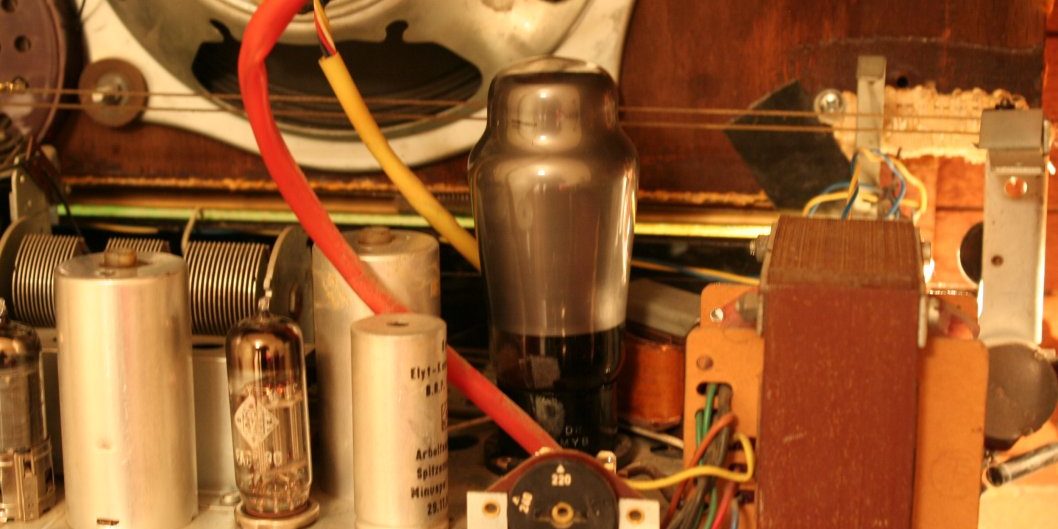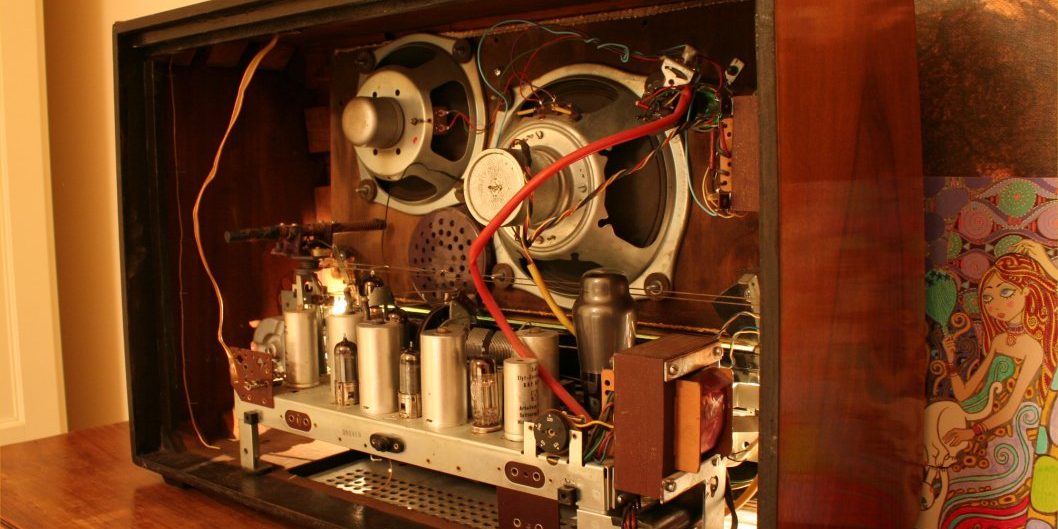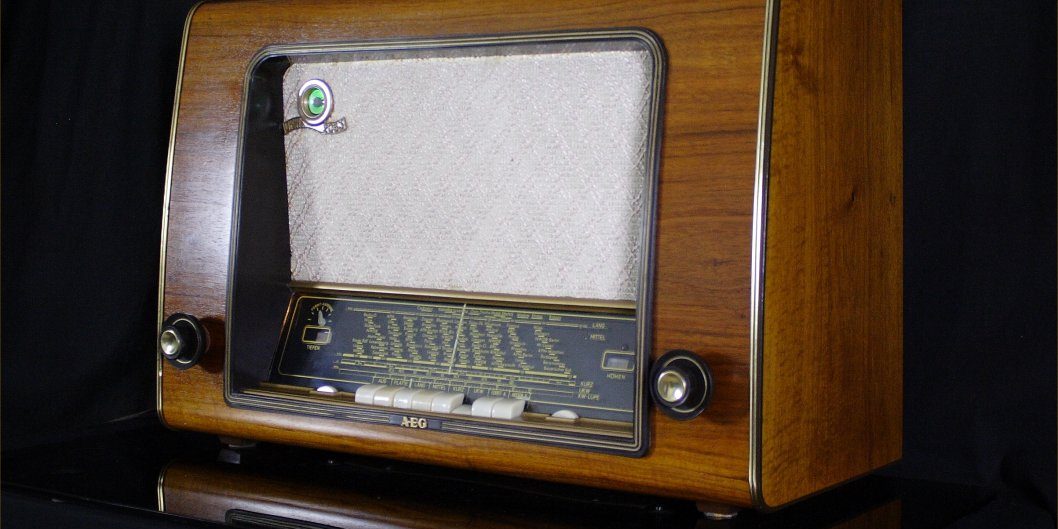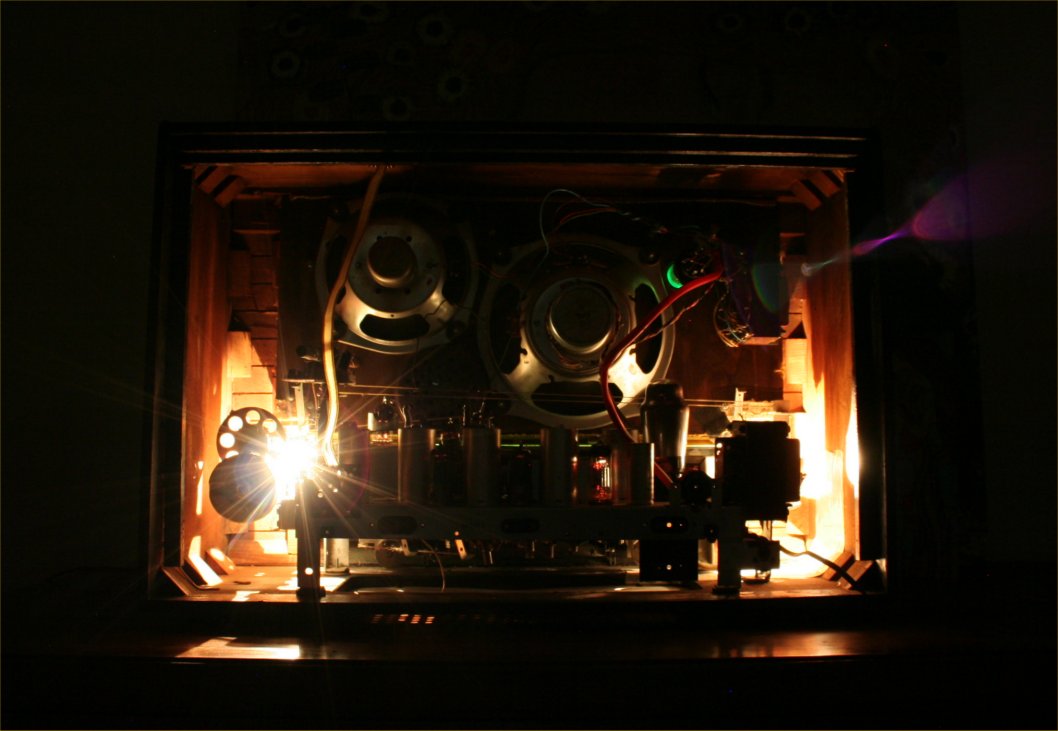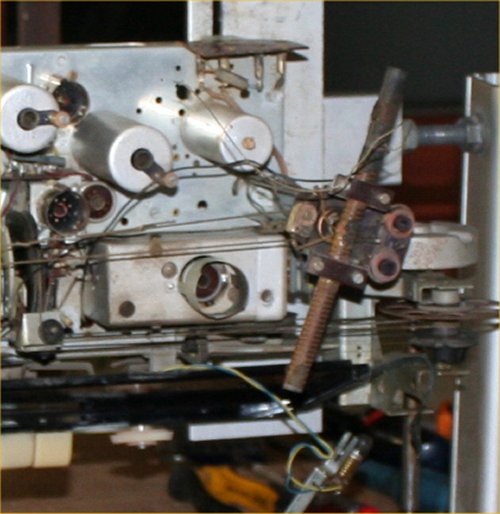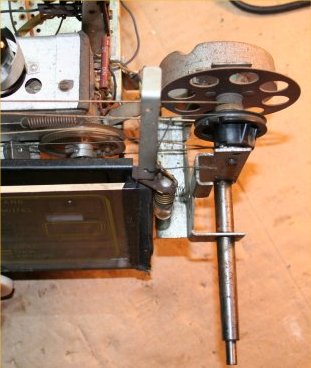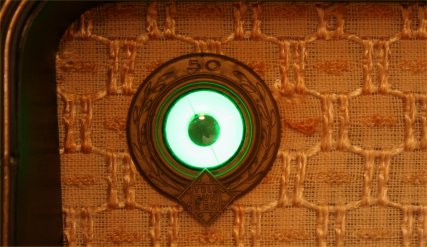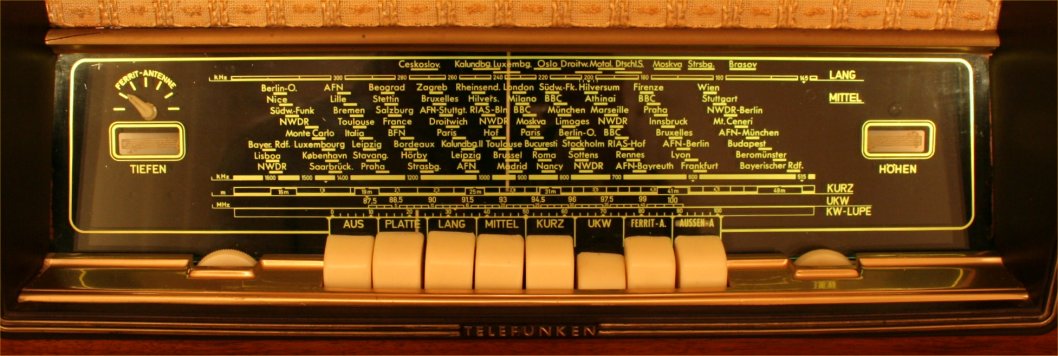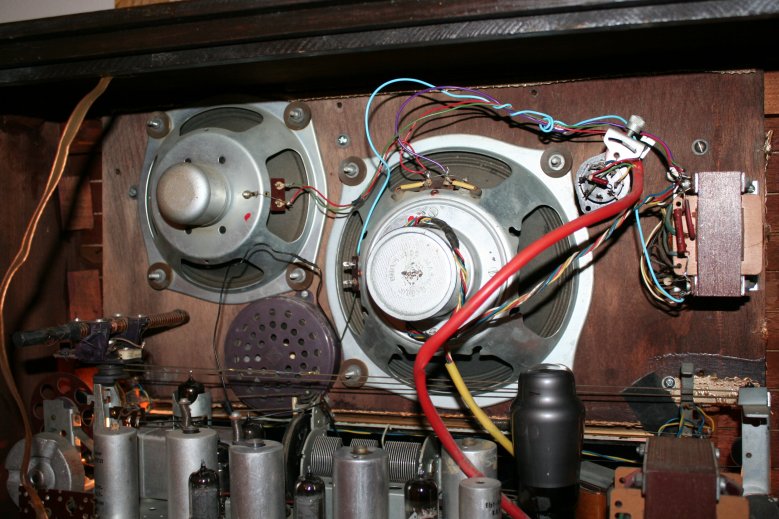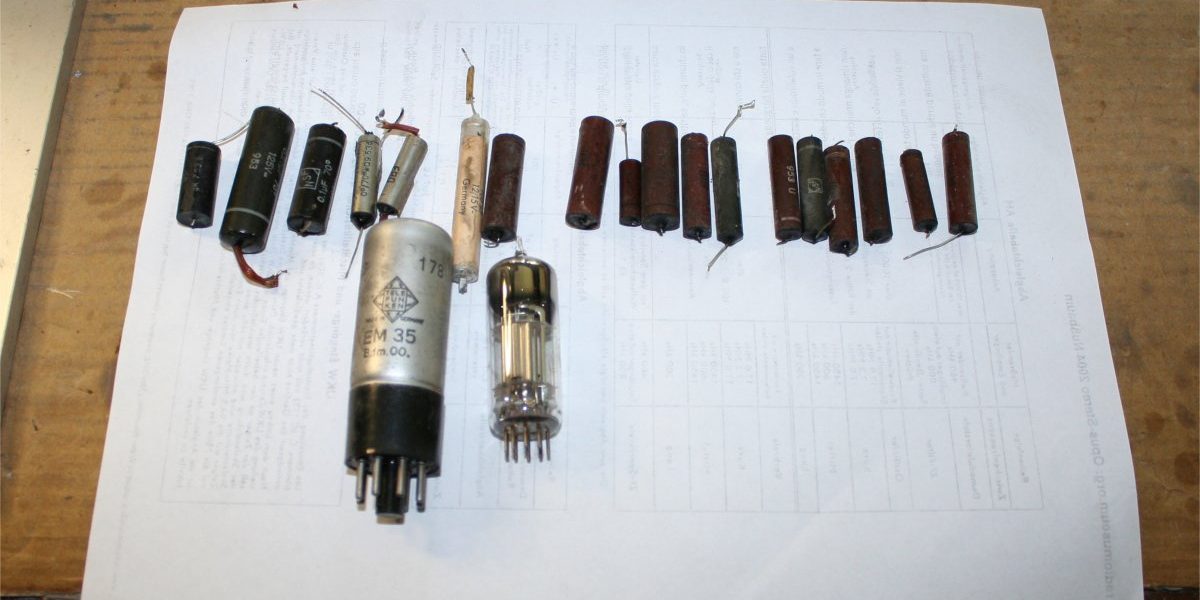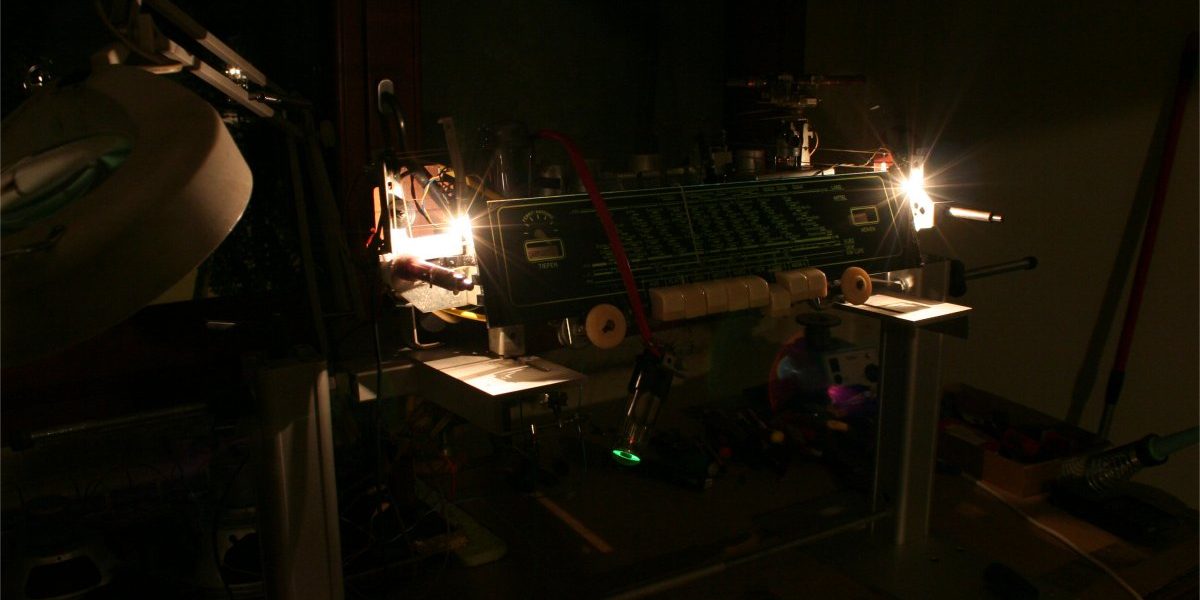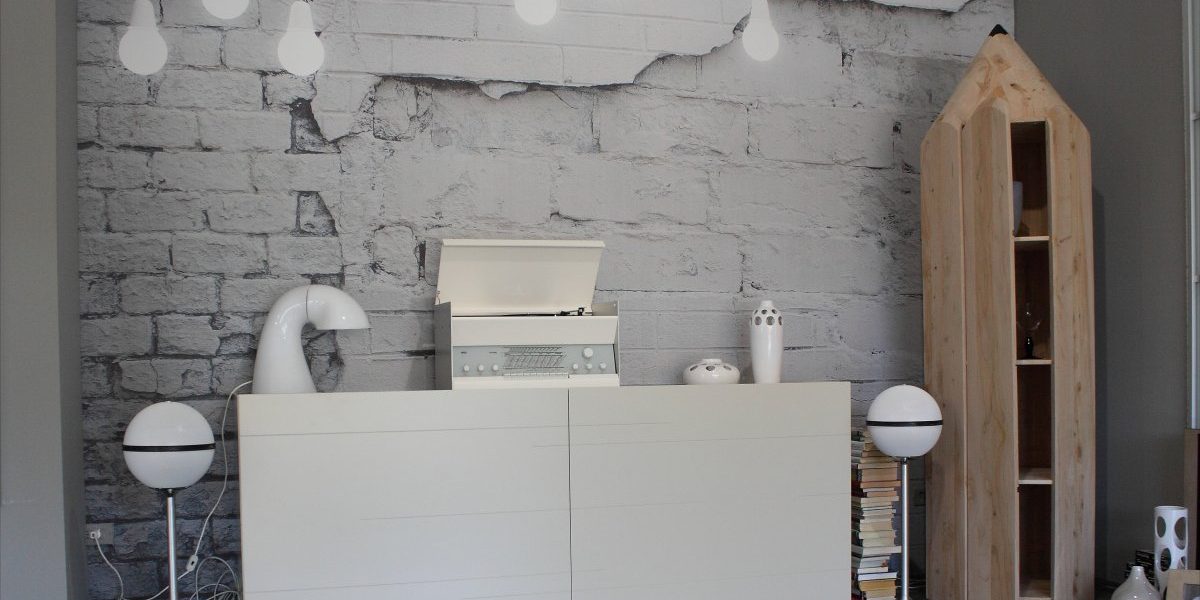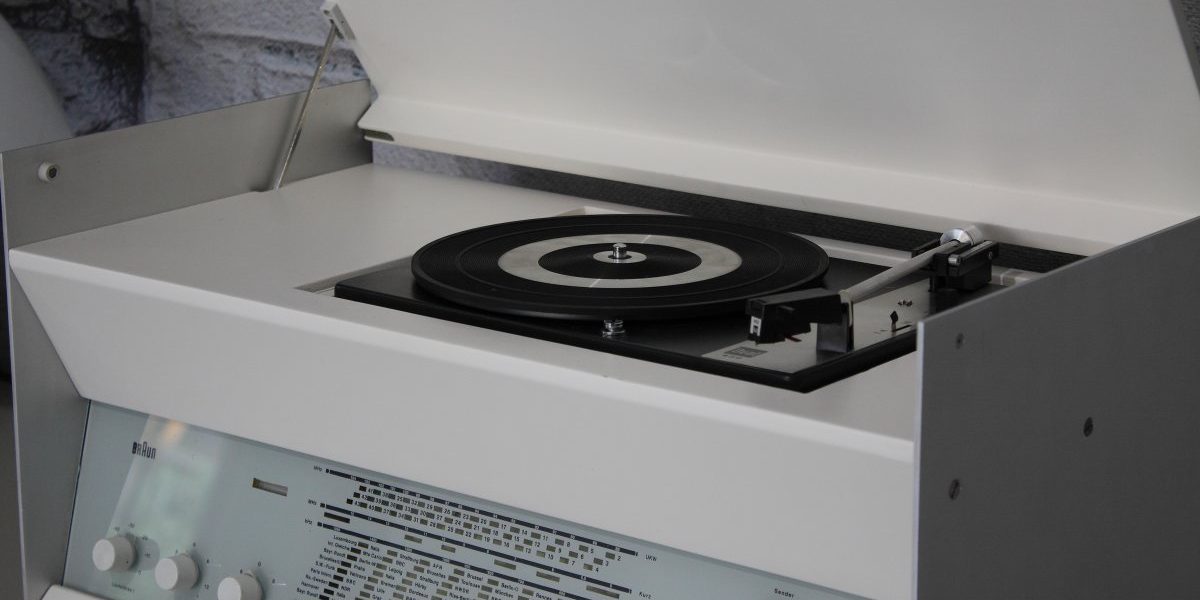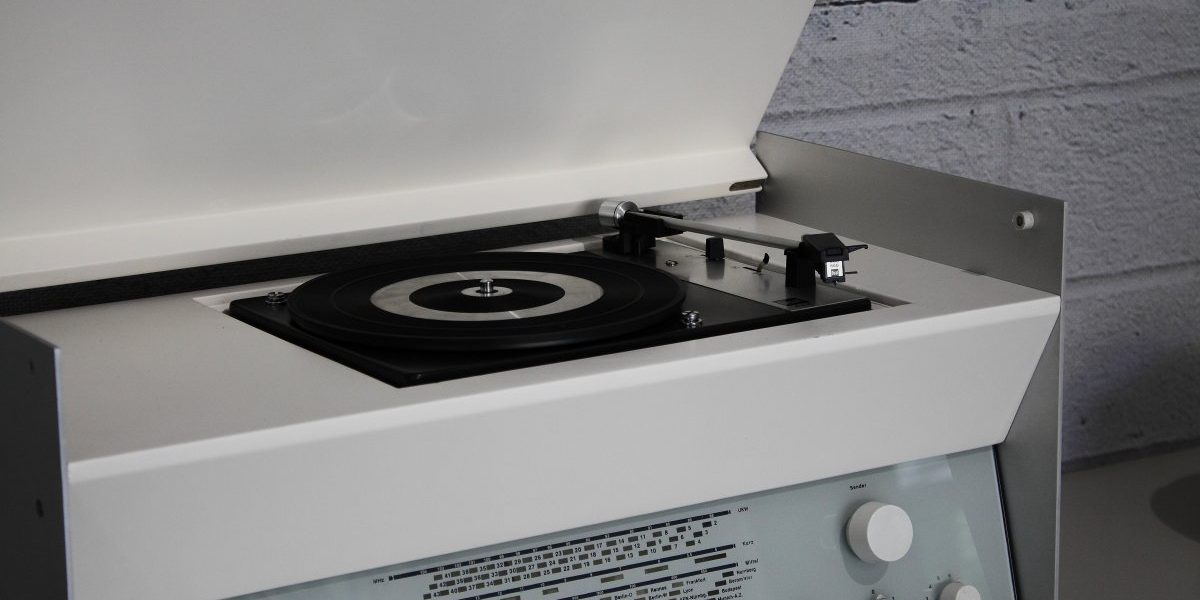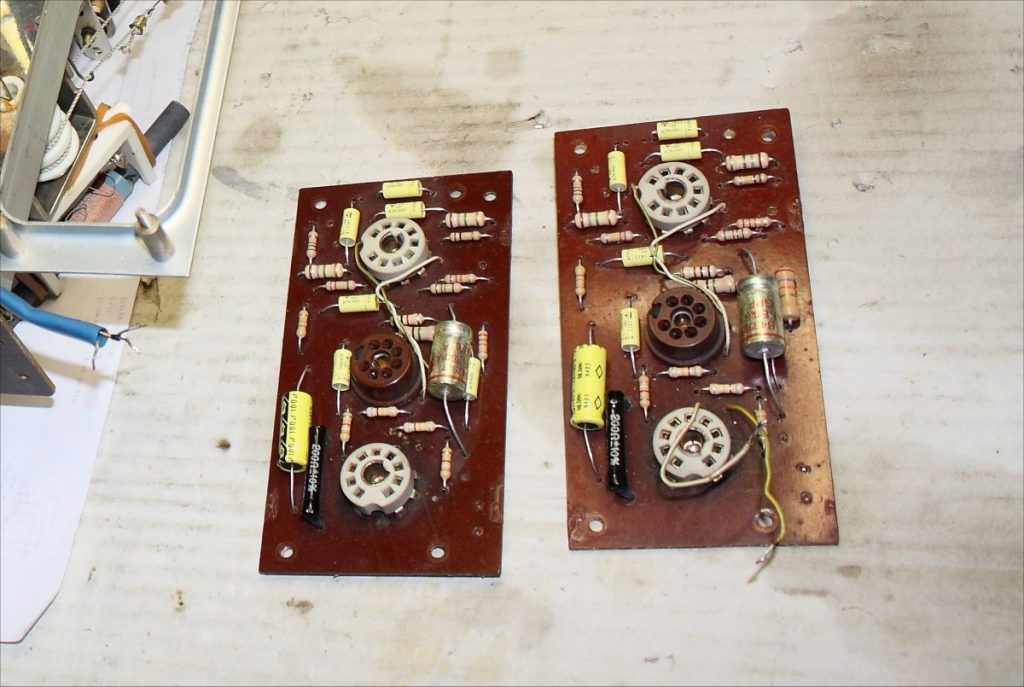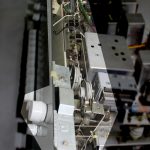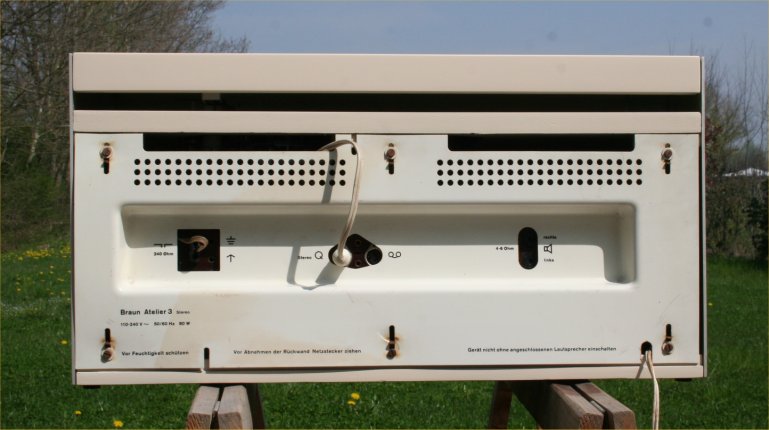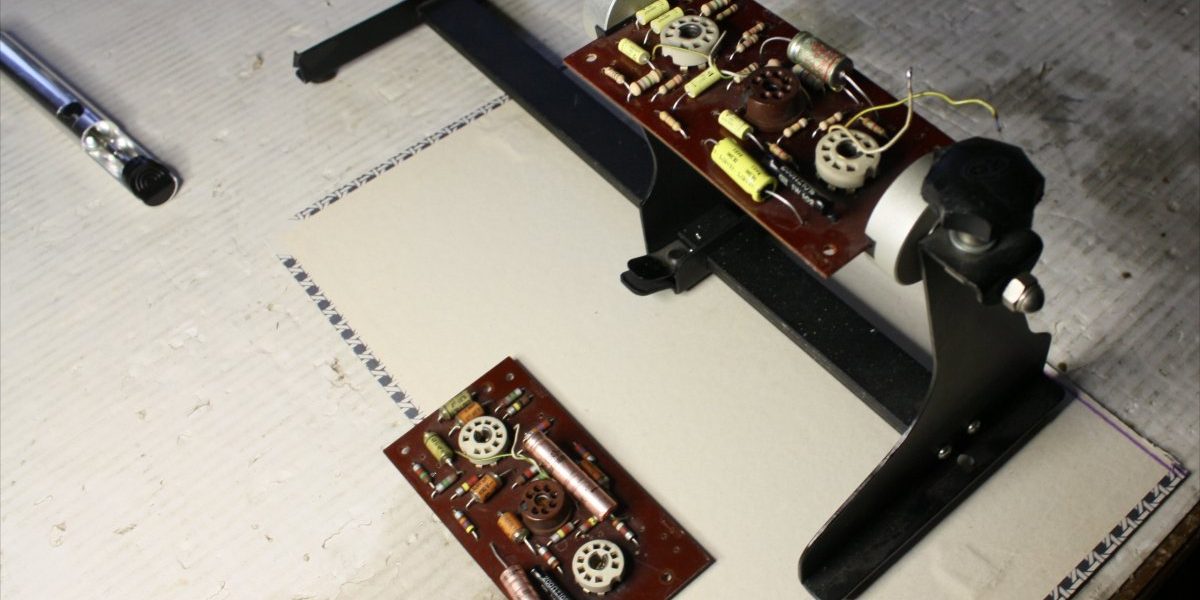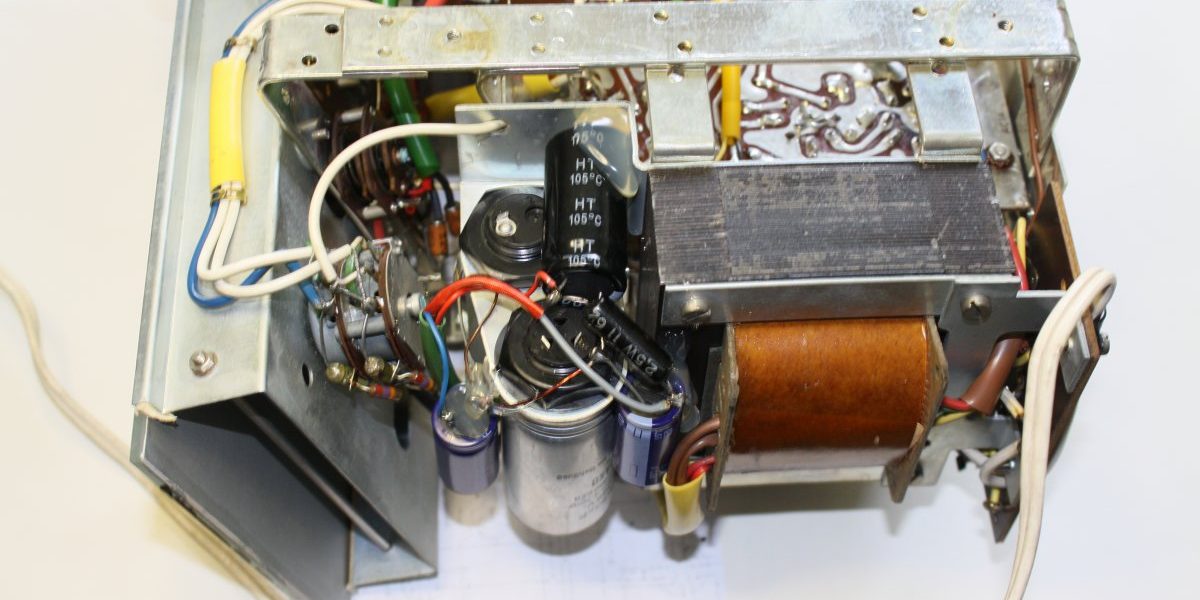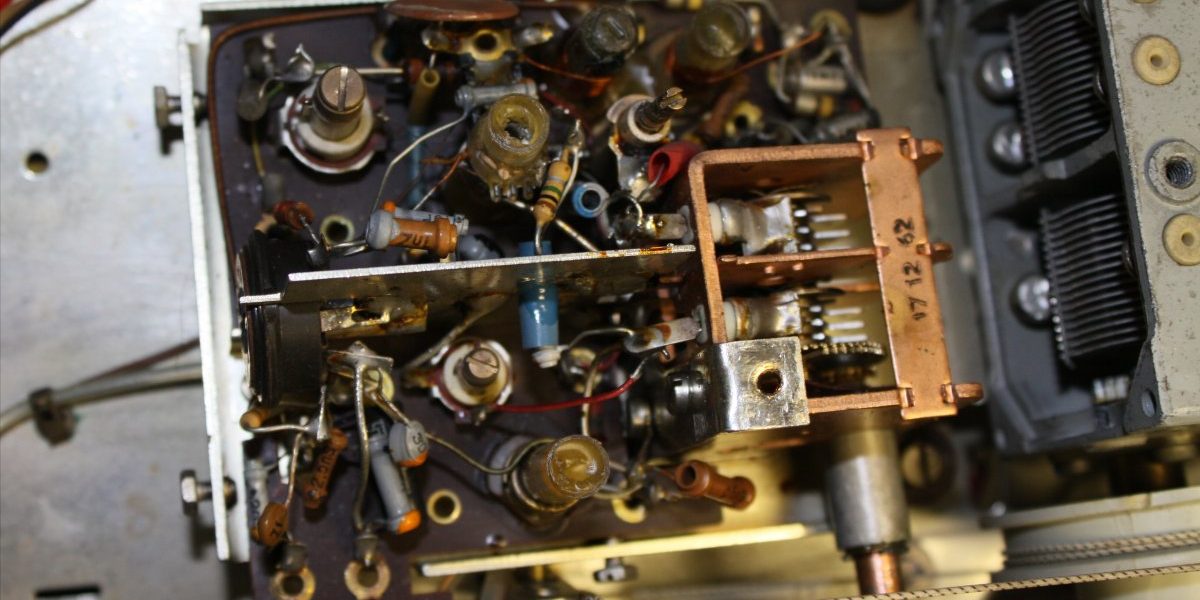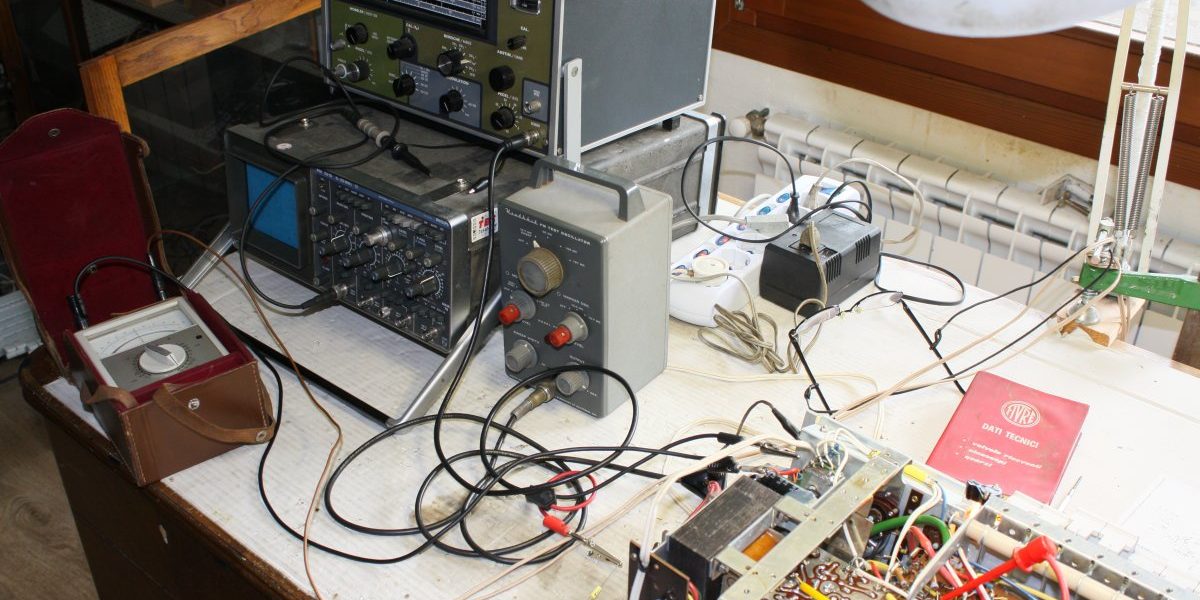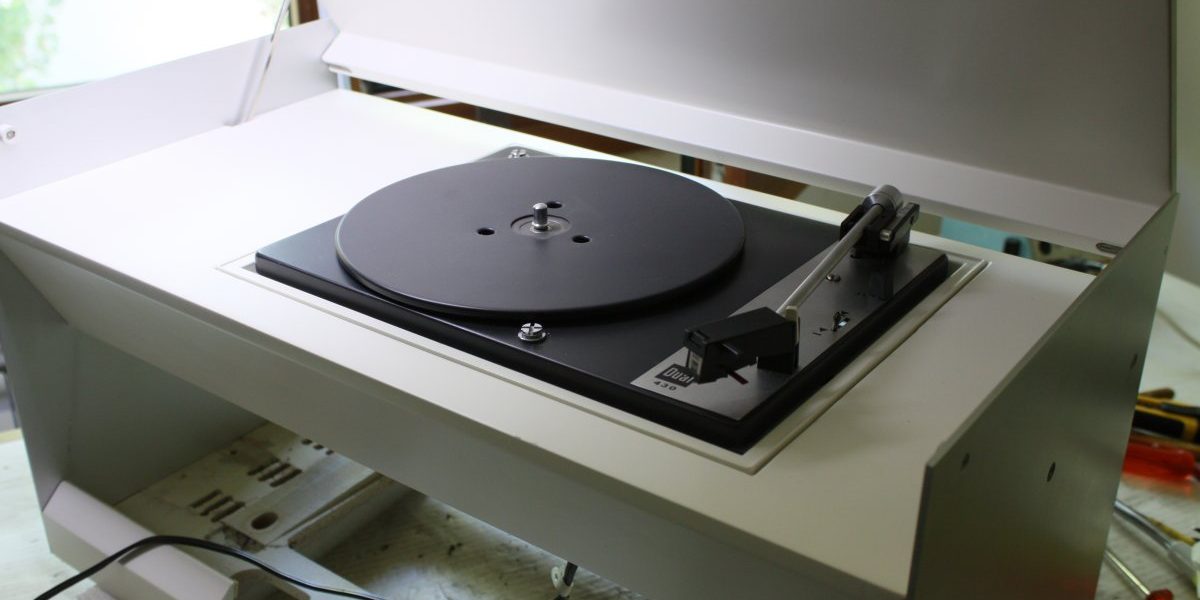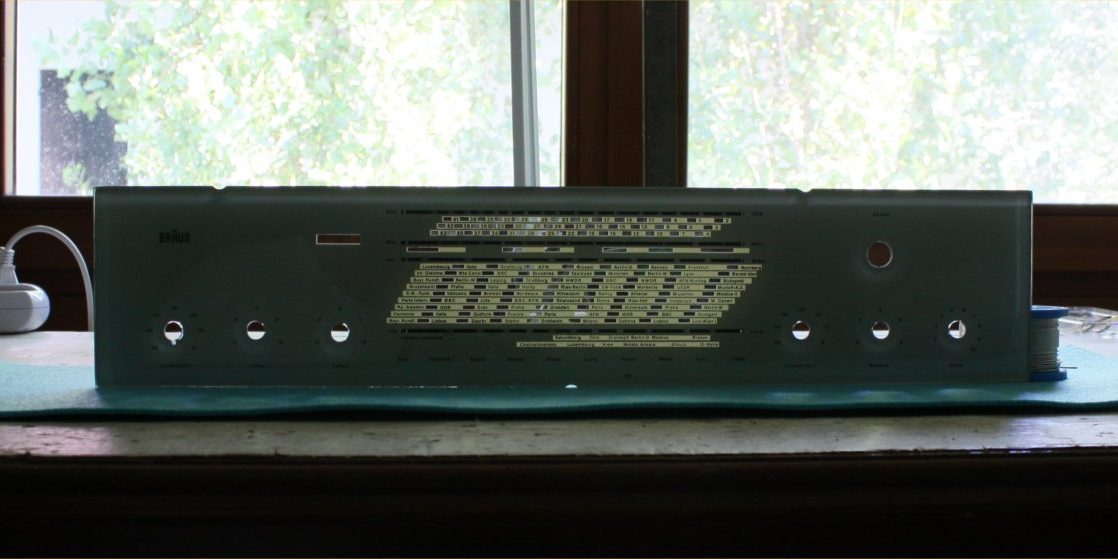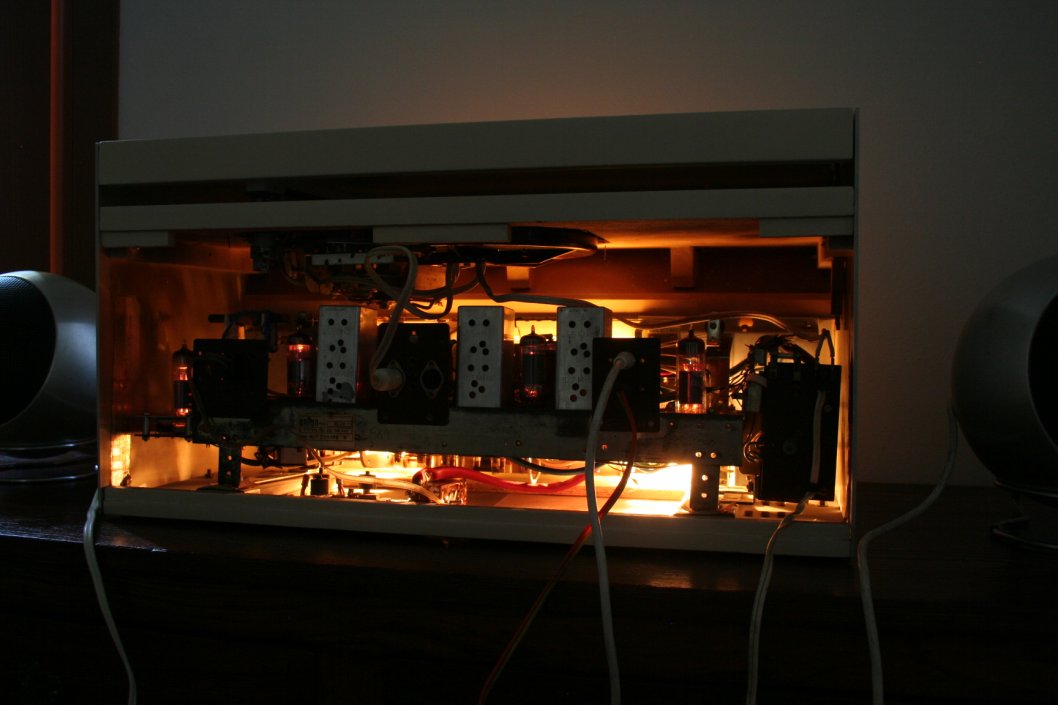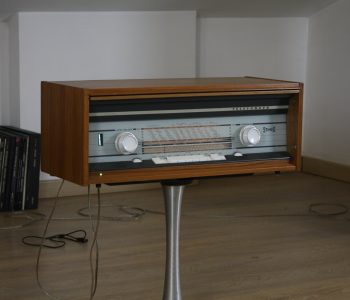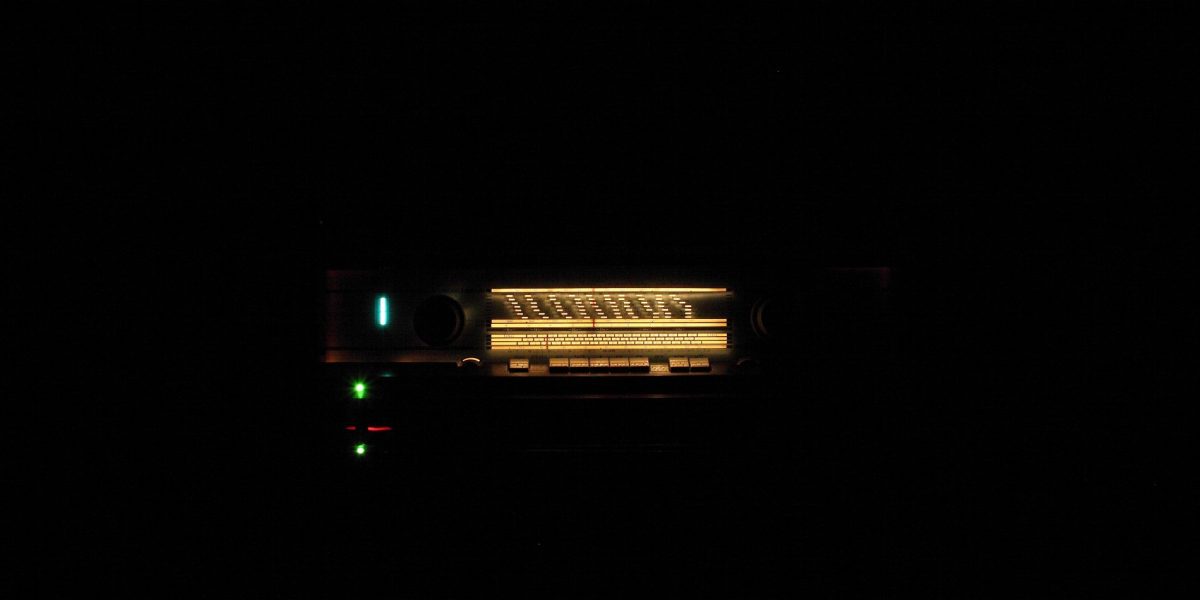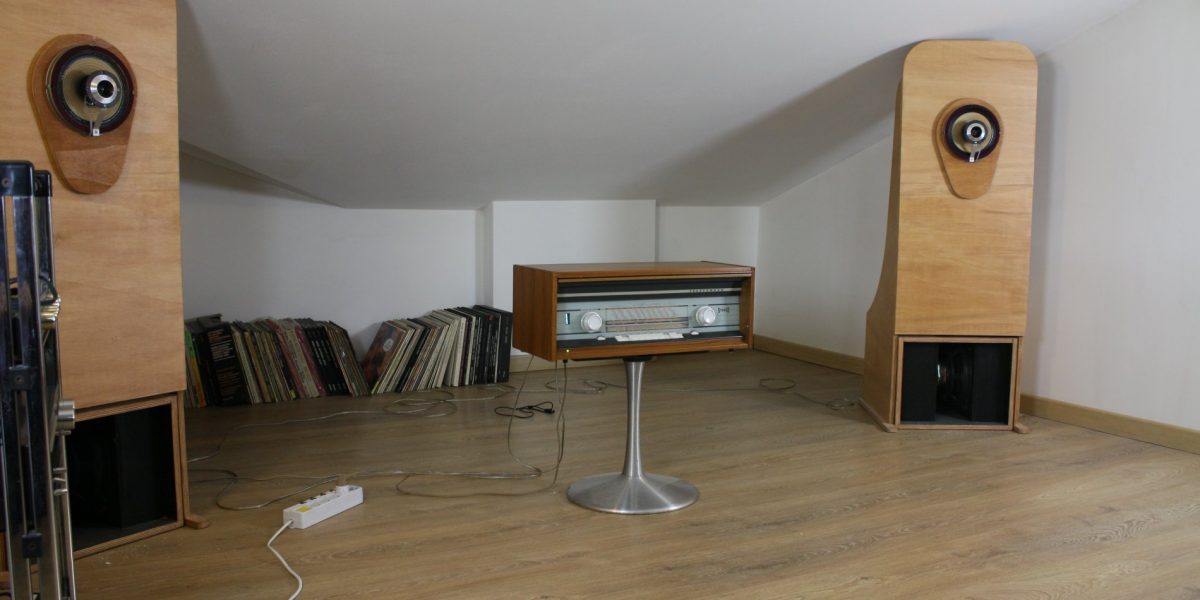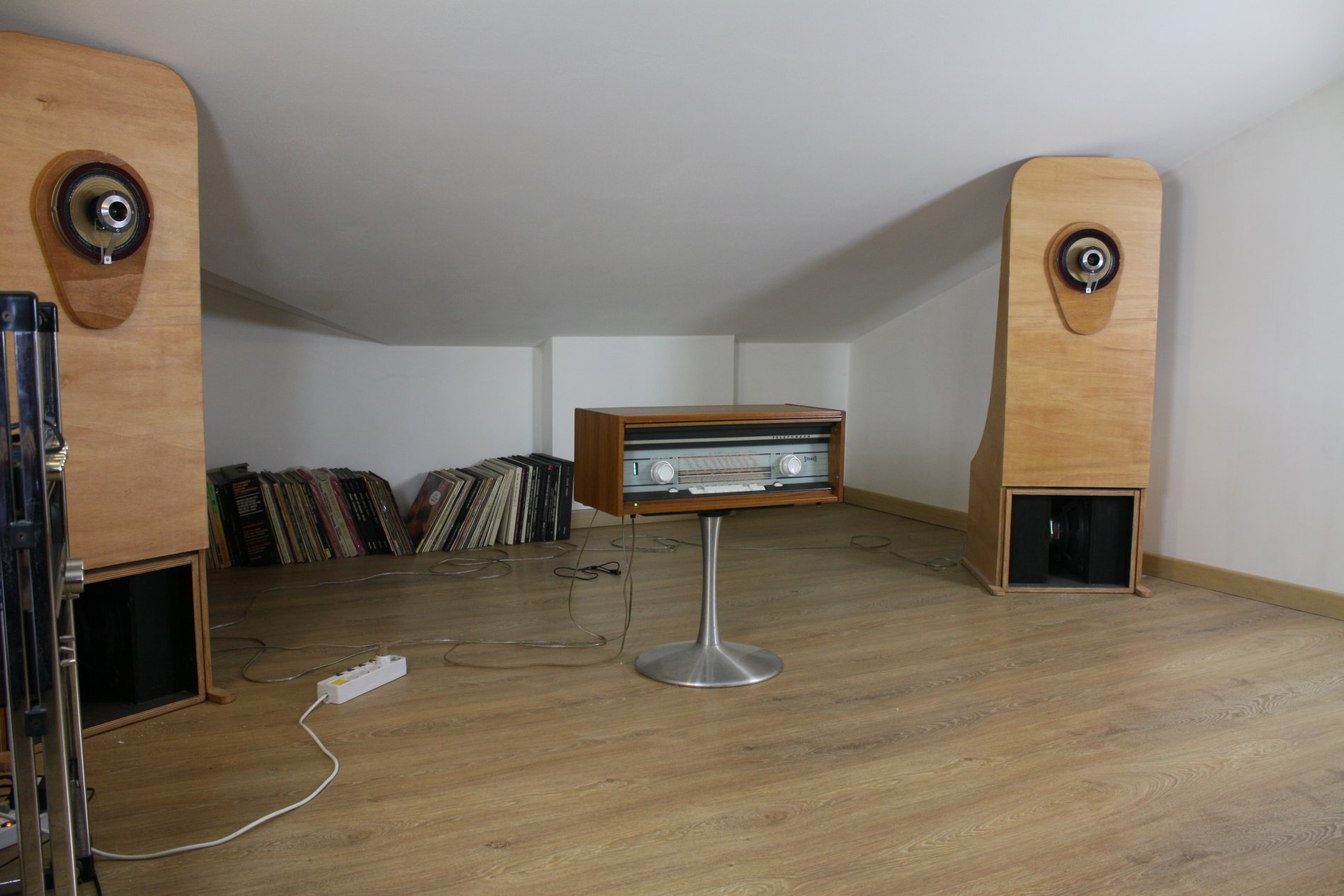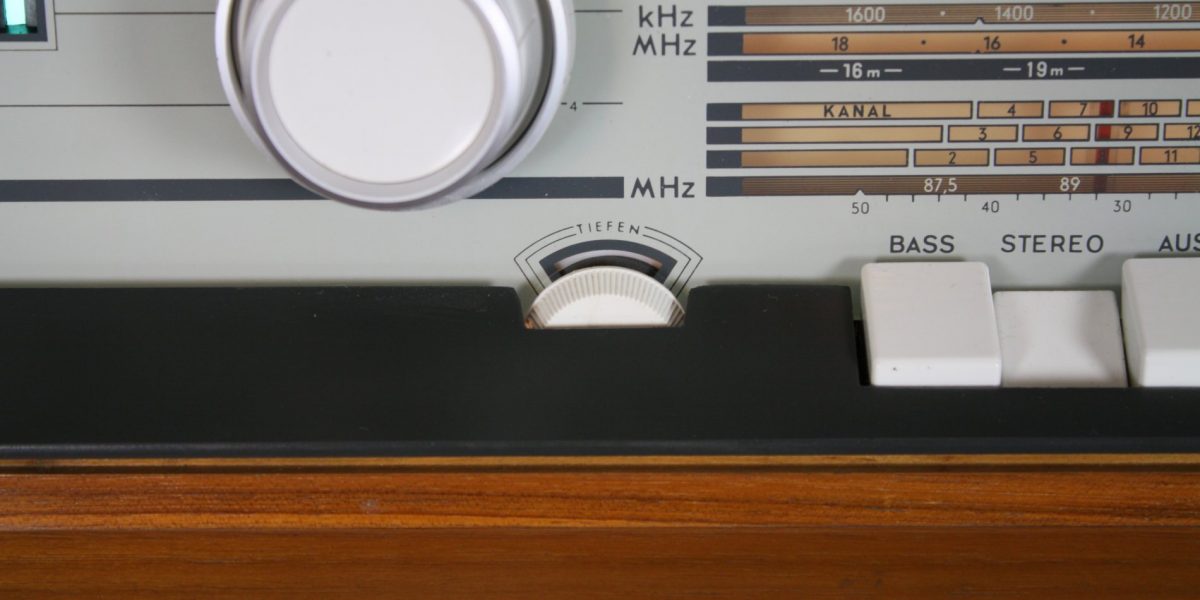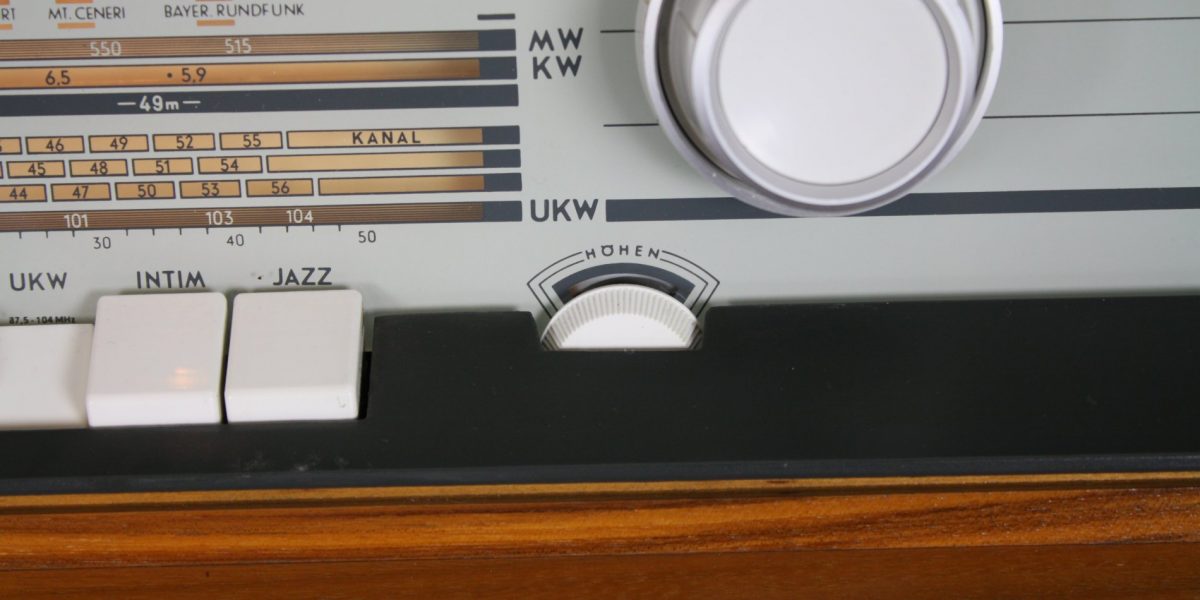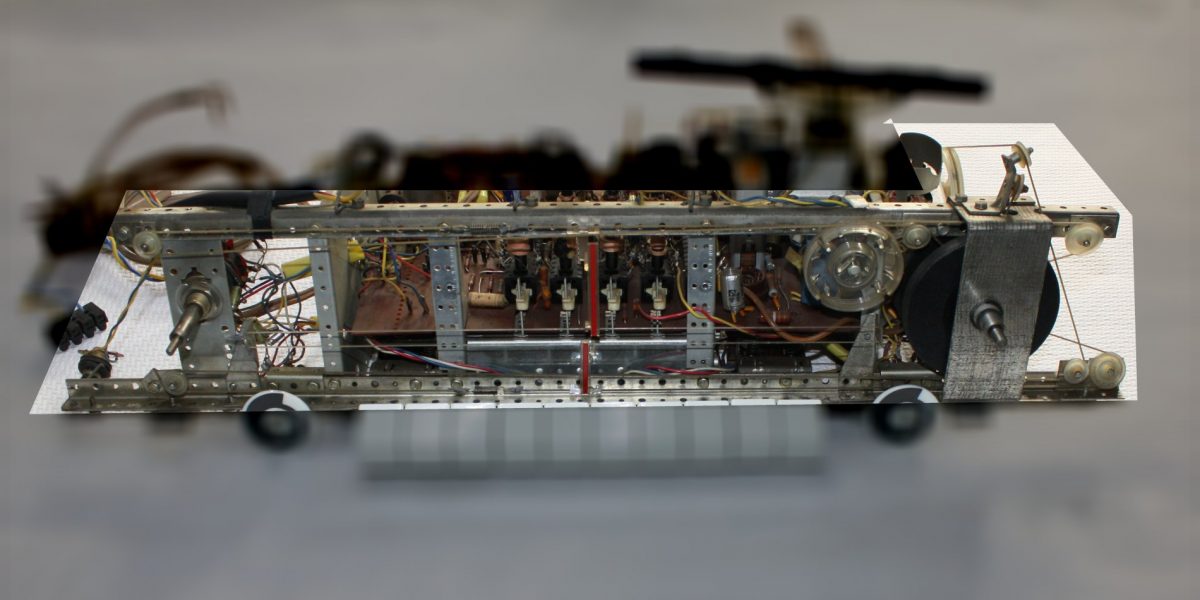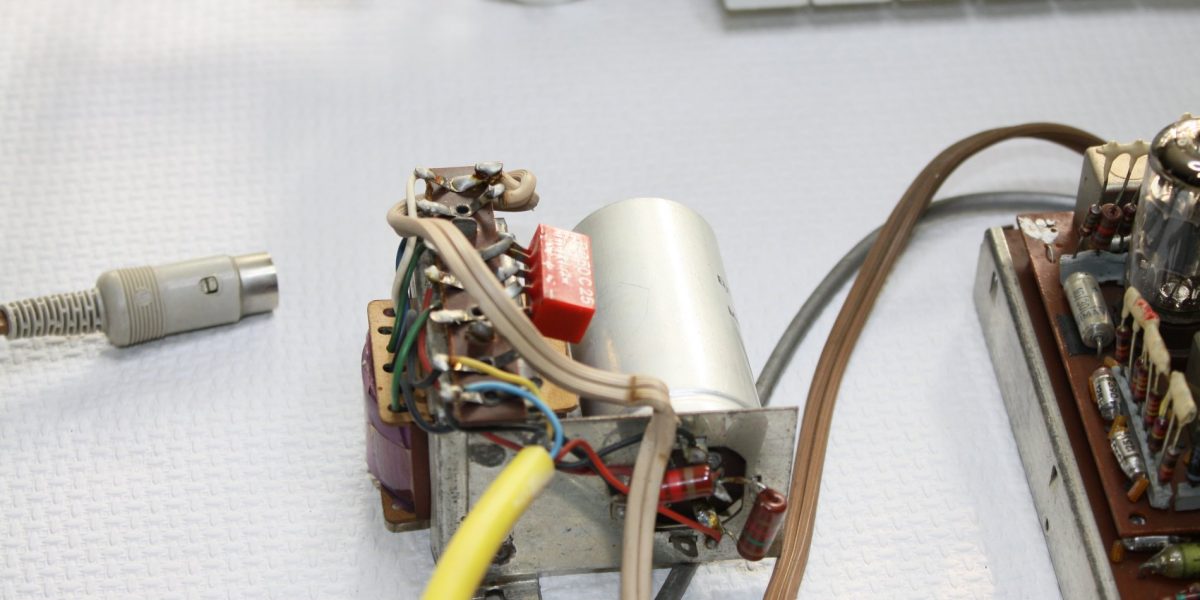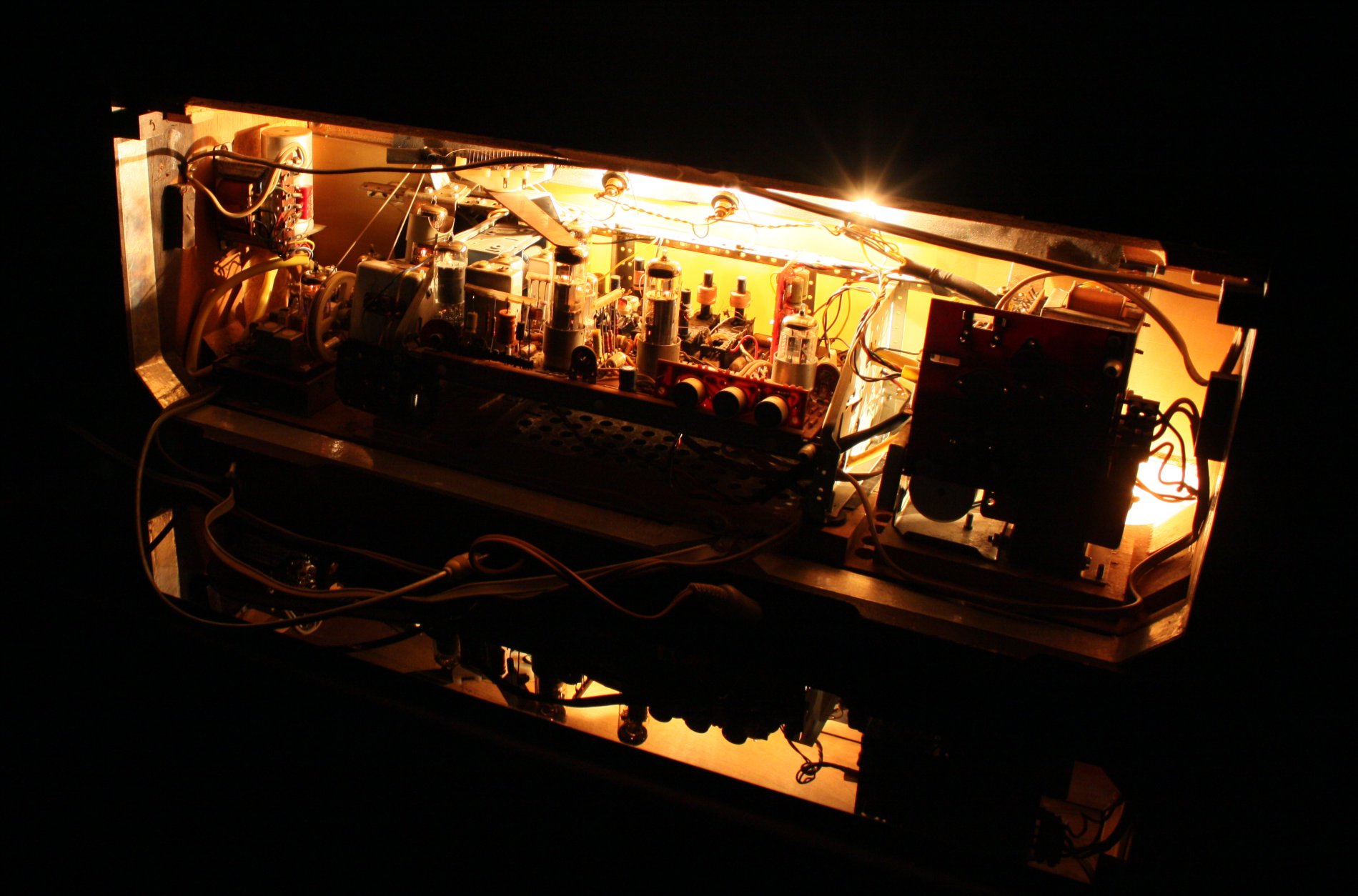 german radios - en
german radios - en
Loewe Opta Venus 822W – en
- 21st February 201731st May 2018
- by giovanni
Loewe Opta Venus 822W
LOEWE OPTA VENUS 822W
The Loewe Opta Venus 822W, Loewe’s the top model after the Hellas, has a most beautiful casing.
One of the characteristics of Loewe-Opta radios that I have always appreciated is their commitment and beauty from an aesthetic point of view. The wooden surfaces are all convex with the front of the device which supports the keyboard by ogive arch sections. Frames in authentic lapped brass. Folded edges in the brass leaf. The keyboard itself has rounded and edged buttons in an ivory tint. The grain of the wood is finely coupled with perpendicular intersections.
All of these precious features come together to achieve a vibrant, balanced, and very pleasant cabinet.
Back in the day, carpenters knew the difference between a piece of wood and a furniture.
Obviously what is stunning about this device is the original illuminated section that reproduces a gracious abat jour effect. Such valuableness is not found is any other device of any other brand. The lighting feature can be activated by gently pulling a small cord on the top left side of the *case/cabinet/chassis and can be turned on or off independently from the radio itself.
The listening experience, after the necessary warm-up time, is naturally very pleasing, full-bodied but also ringing and clear.
The Venus 822W is equipped with a hearty front speaker with a rounded wide-band produced by Isophon. This transducer has the curvature of a cone-shaped hyperbole typical of multioctave/multiple-eighths speakers.
The two lateral tweeters induce a 3D-effect and allow a homogeneous musical response from whichever angle the device is listened from.
Tuning is stable and reception, particularly in FM, is very clean.
The device, once turned on, is ready to use after a few swconds of warm-up time, but as for all tube-device the optimal sound is achieved after at least 15 minutes of use. All the components need to reach the operative temperature to become stable.
LOUDSPEAKERS
Three impressive loudspeakers. A big wideband on the front and two eliptical mid-tweeters on the left and right side.SPEAKER LIGHTING
You can use this radio as nice beside lamp.BLUETOOTH
Bluetooth receiver embedMULTI PLATFORM CONNECTION
Each radio is equipped with a cable for connection to any digital device.TUBESOUND IMPROVEMENT
- Bluetooth receiver embed - The unit is equipped with a BLUETOOTH receiver powered directly by the receiver power supply. This makes it possible to control the amplifier from any external digital device as an IPAD, a Smartphone, or a sophisticated multimedia station. So you can hear your preferred web station or your lossesless file without cables on the room. Wireless Receiver can be equipped upon requests.
- Multi Platform Connection - A customized adaptation cable to connect any digital device as Iphone, Smartphone, Laptop, CD Player etc. will be provided with this radio. This special cable suits the different impedances between the modern equipment and the receiver. Furthermore the two stereo channels flow into one without increasing the load to the input unit.

Dr. Siegmund Loewe

Loewe Opta factory - Kronach (D)
HISTORY
1923 Foundation of the radio frequency GmbH by brothers Siegmund and David Ludwig Loewe, and others.
1926 The first success come, the Loewe OE333 radio.
1929 The founding of Loewe Television AG
1931 World's first TV based on the cathode ray tube
1933 Because Hitler the political against the Jews forces Ludwig Loewe to emigrate.
1938 Loewe produce the first home audiovisual entertainment centre with integrated radio, television and record player.
1939 Introduction of the standard TV receiver "E1"
1940 Loewe becomes a war factory and change name to Löwe Radio and Co.
1942 Löwe Radio forced to change its name to Opta and Co.
1945 Civil production continues in Berlin, Leipzig and Kronach
1946 The establishment of a branch factory in Düsseldorf where were built the best Loewe radios
1949 The firm is changed in Loewe Opta and Co
1950 The world's first home tape recorder
1958 Radio production continued only in Berlin and Düsseldorf. Kronach factory produces only TV
1961 Germany's first device for home recording, the Optacord 500
1964 Founding of Loewe Opta GmbH
1965 From now on radio production was carried on only in Berlin
1979 Loewe revolutionizes the construction of TV sets with the inroduction of the fully integrated platina chassis.
1981 The sensation: Loewe presents to the press the first European stereo TV
1983 Loewe introduces the first series production of the BTX decoder for the new CEPT standard.
1994 Loewe bring the first fully digital TV with 100 Hz Technology onto the market
1997 With the Loewe Xelos @ media the age of the union of television,computers and telecommunications is introduced.
MAIN FEATURES
Year of production: 1955/56
Superheterodyne IF 460/10700
11 AM Circuits
11 FM Circuits
Wavebands:
LW, MW, SW, FM
Operating voltage (CA) 110; 125; 160; 220 Volts
3 Wideband loudspeakers
Dimensions (LHD): 25.2 x 16.3 x 11.2 inch
Net weight: 31 lb 15 oz
7 Tubes:
ECC85 ECH81 2xEF89 EABC80 EL84 EM80
Rotating ferrite aerial for AM bands
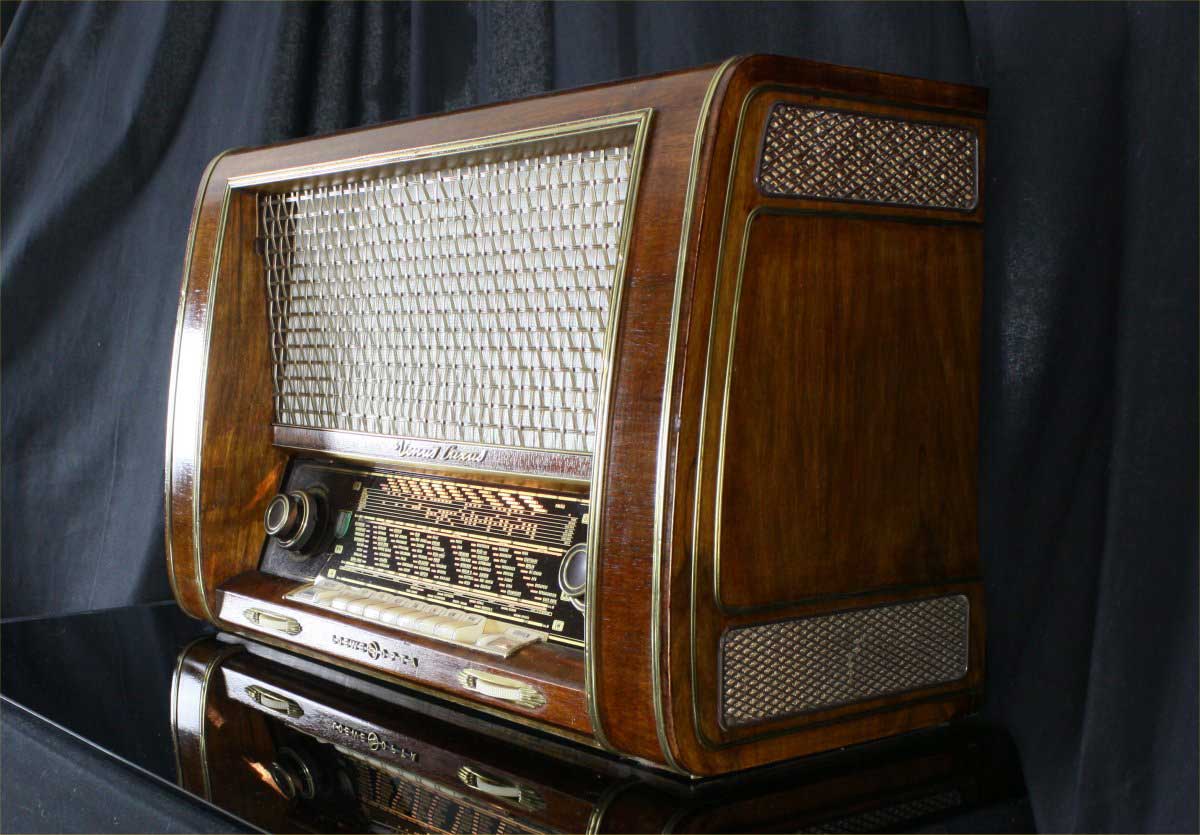
TONE CONTROL WITH LEVEL INDICATION
The tones control system is very efficient. Above the large tone control knobs there is a band that lights up gradually indicating the emphasis on the band on which it acts.

AERIALS
Inside the cabinet there is a dipole for FM reception and a ferrite rotating aerial for AM reception.
Ferrite aerial can be rotated from the outside to achieve a perfect tuning of the device in the AM.
In this picture see the rotation mechanism and the position indicator of the aerial.
The reception sensitivity with internal aerials is very good. This unit was in fact produced in a period when there were not many radio stations and those available fairly apart from each others.
Using an external aerial sensitivity is further increased.
SEPARATE CONTROL TUNING BETWEEN AM AND FM
The tuning system is another gem.
The unit is equipped with mechanisms for keeping separate the AM and FM bands.
The tuning knob is single but a selector switch commutes into cable systems (all in steel) and pulleys separated depending on the band.
The movement is transferred to both mechanisms with a system of pulleys and separated gears.


TUNING INDICATOR
The magic eye has of course been replaced.
LOUDSPEAKERS
There are three loudspeakers.
The large wide-band loudspeaker in die-cast aluminum delivers a warm, deep bass, very present medium tones and a smooth, silky treble.
The two elliptical Mid-Tweeters, when inserted, reconstruct the scene with a brilliant treble sound that is never squeaky or annoying, that typical of paper tweeters.
The Mid-Tweeters are isolated from the rest of the chassis being that each is collected in a designated shell that also has the function of conveying the sounds in the double side exits.

On the left side you can see the volume control knob (with incorporated loudness).
Pulling on the volume knob activates the narrow tuning for the mid-wave band.
From the upper side the FM, the Short, medium and Long Waves.
Finally, the movement of the tuning knob is very pleasant being supported by a large flywheel.
Axially to the tuning knob the command of the ferrite antenna rotation.
From left, there are, in order of appearance, the bass control with its indicator, the 3D buttons, the "Voice" equalization, FA-Ferrite Antenna, OFF buttons, record player, keys for tuning Long, Short and Medium Waves, FM, and the knob for the treble control with its own indicator.

REAR SIDE
AM and FM antenna inputs and ground socket.
Output for external speakers.
Socket for recorder (tonbandgerat).
Turntable input (Tonabnehmer)
RESTORATION STEPS
THE USUAL AMAZING LAST IMAGE
